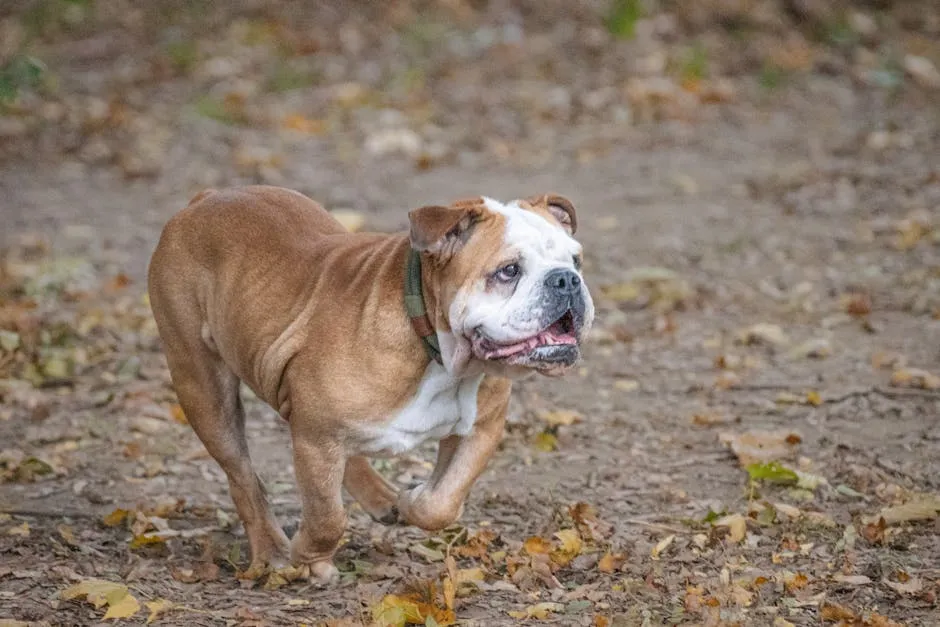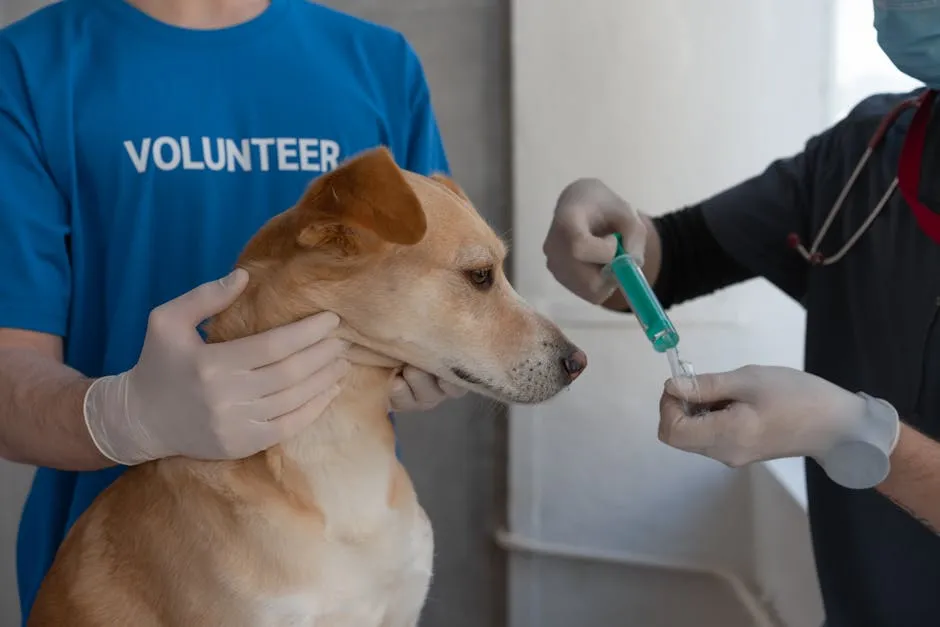Introduction
If you’ve ever caught your pup eyeing your breakfast toast with a drizzle of honey, you might find yourself wondering: can dogs have honey? This golden nectar is a staple in many households, revered for its sweetness and health benefits. But before you share a spoonful with your furry friend, let’s dive into the facts about honey and its suitability for dogs. Spoiler alert: it might not be as simple as it seems!
In fact, if you’re looking to sweeten up your dog’s life with some natural goodness, consider getting some raw honey. It’s a great way to add a little sweetness without any artificial ingredients.
Summary of Key Points
In this comprehensive guide, we’ll explore the safety, benefits, and risks of feeding honey to dogs. You’ll discover that while honey can be a delightful treat in moderation, it comes with caveats. We’ll discuss the types of honey that are safe, how much your dog can have based on their size, and the potential health benefits—such as its antibacterial properties and possible relief from allergies. However, we’ll also cover when honey should be avoided, particularly for certain health conditions. Plus, we’ll share creative ways to incorporate honey into your dog’s diet. Get ready to learn everything you need to know about sharing this sweet treat with your canine companion!
Is Honey Safe for Dogs?
Overview of Honey and Dogs
Honey is a sweet substance produced by bees. It contains natural sugars along with small amounts of vitamins and minerals. The short answer? Yes, honey can be safe for dogs to eat in small quantities. However, there are some important considerations to keep in mind.
First, let’s talk about sugar. Honey is packed with sugar, which can lead to weight gain and other health issues if consumed excessively. So, moderation is key! You wouldn’t want your pup to swap their wagging tail for a hefty belly, right?
Speaking of keeping your pup healthy, have you considered a Dog Toothbrush and Toothpaste Set? Keeping those pearly whites clean is crucial, especially when indulging in sweet treats like honey!
Dental health is another concern. Just like humans, dogs can experience dental issues from sugary treats. Brushing your dog’s teeth after they indulge in honey can help avoid tooth decay.
When it comes to raw honey, caution is necessary. Raw honey can contain botulism spores, which can be harmful to puppies and dogs with compromised immune systems. Always consult your veterinarian if you’re unsure about introducing honey into your dog’s diet.
Ultimately, honey can be a safe and enjoyable treat for dogs when given in moderation. It’s essential to keep your furry friend’s health in mind while sharing this sticky delight!
Risks of Honey for Dogs
While honey has its perks, it’s not all sunshine and rainbows. The sugar content in honey can lead to serious health problems. For starters, excessive sugar can contribute to obesity, diabetes, and other metabolic issues. So, if your pup is already a bit on the fluffy side, you may want to rethink that honey drizzle.
And speaking of keeping your dog active, a Dog Agility Equipment might just be the ticket to keep them moving and grooving while you indulge in those sweet honey moments!
Dental issues are another concern. Just like us, dogs can face tooth decay from too much sugar. If you want to avoid a trip to the vet for dental work, consider brushing your dog’s teeth after they enjoy their honey treat.
Now, let’s address raw honey again. While it’s a natural wonder, it can harbor botulism spores. This is especially risky for puppies and dogs with weakened immune systems. Always choose wisely when selecting honey for your furry friend.
Lastly, allergic reactions can occur. Some dogs may have allergies to honey or pollen found within it. If you notice any unusual symptoms after giving your dog honey, stop immediately and consult your vet.
So, while honey can be a sweet treat, it’s crucial to be aware of the risks and monitor your dog’s health closely. After all, we want our pups to enjoy their treats without any nasty surprises!
Overview of Honey and Dogs
Honey is a sweet, viscous substance produced by bees. It contains natural sugars, vitamins, and minerals, making it a popular ingredient in many human diets. Dogs can indeed have honey in small amounts, but there are key factors to consider before sharing this sticky treat with your furry friend.
First and foremost, let’s talk about safety. Most veterinarians agree that honey is non-toxic for dogs. However, it’s important to understand that moderation is crucial. Dogs have different dietary needs compared to humans, and too much sugar can lead to various health issues. Think of honey as a rare dessert rather than a daily staple!
The general consensus is that honey can be safe for dogs. Many pet owners use honey as a natural remedy for ailments like coughs or allergies. Raw honey, in particular, is often touted for its potential health benefits, including antimicrobial properties. However, caution is required, especially when it comes to puppies and dogs with weakened immune systems. Raw honey can harbor botulism spores that may be harmful to these vulnerable pooches.
And while we’re on the topic of health, consider treating your dog to some Dog First Aid Kit. You never know when a little mishap might occur, especially when you’re out exploring together!
Dog owners should be mindful of their pet’s overall diet. Treats, including honey, should make up no more than 10% of a dog’s daily caloric intake. This ensures that your pup still receives balanced nutrition from their regular dog food. So, while a little honey can add flavor and fun to your dog’s diet, remember: a spoonful here and there is the way to go!
Risks of Honey for Dogs
While honey is often praised for its benefits, it carries risks that every dog owner should consider. The first concern is sugar content. Honey is primarily composed of sugar, which can lead to obesity and diabetes if consumed in excess. If your dog is already on the fluffy side, adding honey to their diet might not be the best idea.
Dental health is another important issue. Just like humans, dogs can suffer from tooth decay due to sugar. If you opt to treat your dog to honey, brushing their teeth afterward can help prevent dental problems down the line. Nobody wants a pup with a painful toothache!
Raw honey poses additional risks. It can contain botulism spores, which can be particularly dangerous for puppies and dogs with compromised immune systems. If you have a young pup or an older dog, it’s best to avoid raw honey altogether. Always consult your veterinarian if you have doubts about introducing honey into your dog’s diet.
And speaking of keeping your dog healthy, consider adding some Natural Dog Supplements to their routine to support their overall well-being!
Allergic reactions are also possible. Some dogs may react to the pollen found in honey. Symptoms can range from mild itching to more severe reactions. If you notice any unusual behavior or symptoms after giving honey to your dog, stop immediately and reach out to your vet.
In conclusion, while honey can be a delightful treat, it’s essential to be aware of the potential risks. Monitoring your dog’s health and consulting with your vet will help ensure that your furry friend enjoys their sweet treat without any nasty surprises!
Benefits of Honey for Dogs
Nutritional Value of Honey
Honey is more than just a sweet treat; it’s packed with nutrients! This golden goo contains essential vitamins and minerals. Think of it as nature’s candy with benefits.
First up, honey is rich in antioxidants. Antioxidants help protect your dog’s cells from damage caused by free radicals. Just like in humans, they play a crucial role in maintaining overall health. The vitamins found in honey include vitamin C, several B vitamins, and even vitamin E. These vitamins support your dog’s immune system, skin health, and energy levels.
Minerals also make an appearance! Honey contains calcium, magnesium, phosphorus, and potassium. These minerals assist in various bodily functions, from bone health to muscle function.
Now, let’s talk about raw versus processed honey. Raw honey is the real MVP here. It retains all the beneficial enzymes and nutrients lost during pasteurization. While processed honey is still sweet, it may lack some of the health benefits. So, if you’re looking for maximum nutrition, opt for raw honey. Just remember to check for quality and purity!

And if you’re looking to get adventurous in the kitchen, consider a Organic Raw Honey Cookbook. It’s a great way to explore new recipes that can benefit both you and your dog!
Health Benefits of Honey for Dogs
Allergy Relief
Seasonal allergies can turn your pup into a sneezing machine. Local honey might just come to the rescue! The idea is simple: local honey contains trace amounts of pollen from the area. When your dog consumes it, they might build a tolerance to those pesky pollen particles.
Anecdotal evidence suggests this works wonders for many dogs. However, the scientific community remains a bit skeptical. While some studies indicate potential benefits, more research is needed. If your dog suffers from allergies, consult your vet before relying on honey as a treatment.

Wound Healing
Did you know honey can help with minor wounds? It’s true! Honey, especially Manuka honey, is known for its antibacterial properties. Applying a thin layer of honey to minor cuts and scrapes can help prevent infection and promote healing.
Manuka honey is a superstar in this category. It has unique compounds that enhance its antimicrobial effects. Just remember, always clean the wound first and consult your vet if the injury looks serious. Honey is not a substitute for proper veterinary care, but it can be a helpful addition to your dog’s first aid kit!

Cough Relief
Coughing in dogs can be as annoying as a persistent doorbell. Luckily, honey can help soothe a sore throat! Its thick texture coats the throat, providing relief from irritation.
If your dog is coughing due to a minor issue, a little honey might do the trick. However, it’s essential to check with your veterinarian if the cough persists. Coughing can indicate various underlying issues that need proper diagnosis and treatment. Honey can be a sweet remedy, but it’s not a cure-all!
In conclusion, honey offers several health benefits for dogs. From allergy relief to wound healing and cough soothing, honey can be a fantastic addition to your dog’s occasional treats. Always use it wisely and consult your vet for personalized advice.

How Much Honey Can You Feed Your Dog?
Recommended Serving Sizes
When it comes to feeding your dog honey, size matters! Just like we don’t hand a Great Dane the same portion as a Chihuahua, honey servings should match your dog’s weight. Here’s a handy guide to ensure you’re doling out the right amount of this sweet treat:
- Extra-small dogs (2-20 pounds): A mere 1/4 teaspoon. Think of it as a fancy drizzle on their kibble!
- Small dogs (21-30 pounds): They can handle about 1/2 teaspoon. Perfect for a little taste sensation.
- Medium dogs (31-50 pounds): A full teaspoon is appropriate. Enough to satisfy their curiosity without overdoing it.
- Large dogs (51-90 pounds): Let them indulge with 2 teaspoons. They’re big enough to handle a bit more sweetness.
- Extra-large dogs (91+ pounds): These gentle giants can enjoy up to 1 tablespoon. Just imagine the wagging tails!
Remember, treats should not exceed 10% of your dog’s daily caloric intake. So, if your pup has a few other goodies throughout the day, adjust the honey accordingly. Moderation is key! After all, we don’t want them trading their agility for a honey-induced bellyache.

How to Introduce Honey Safely
Introducing honey to your dog’s diet should be a careful process, much like introducing your new partner to your parents. Start slowly! Here’s how to do it right:
- Start Small: Begin with a tiny amount—just a few drops. Watch how your dog reacts. If they’re licking their lips, you’re off to a good start!
- Mix it In: Once your dog seems to enjoy it, try mixing honey into their regular food. This way, they get the sweetness along with their nutritious meal.
- Monitor Closely: Keep an eye out for any adverse reactions. Look for signs like vomiting, diarrhea, or excessive scratching. If anything seems off, stop immediately and consult your vet.
- Keep Records: Note how much honey you’ve given and any reactions your dog has. This will help you track what works and what doesn’t.
- Consult Your Vet: It’s always a good idea to check with your veterinarian, especially if your dog has any health concerns. They can provide personalized advice tailored to your furry friend’s needs.
By taking these steps, you can safely introduce honey into your dog’s diet. Just remember, it’s all about making it a sweet experience without any sticky situations!

Creative Ways to Feed Honey to Your Dog
Honey doesn’t just have to be a spoonful of sweetness! There are plenty of creative ways to incorporate this sticky delight into your dog’s diet. Let’s get creative, shall we?
- Direct Spoonful Delight: Let your dog lick honey straight from a spoon. It’s simple and they’ll feel like royalty! Just make sure to measure the right amount based on their size.
- Drizzled on Food: Add a drizzle of honey over their regular dog food. It’s a fun way to spice up mealtime. Your pup may even start doing a happy dance!
- Homemade Dog Treats: Mix honey into your homemade dog treats. Try combining it with peanut butter and oats for a tasty snack. Your dog will be begging for more! And if you’re looking for great recipes, check out a Dog Treats Recipe Book!
- Frozen Honey Cubes: Mix honey with water, pour it into ice cube trays, and freeze. These frozen cubes make for a refreshing snack on a hot day. Perfect for summer days when your pup needs to cool down!
- Smoothies and Yogurt: Blend honey into smoothies made with dog-safe fruits or mix it into plain yogurt. It’s a delicious way to sneak in some extra nutrients. Just be cautious with flavored yogurts that may contain added sugars.
- Honey-Infused Fruits: Smear a bit of honey on slices of dog-safe fruits like bananas or apples. This adds a touch of sweetness and makes for a delightful treat!
- KONG Stuffing: Mix honey with peanut butter and stuff it into a KONG toy. Freeze it for a lovely long-lasting treat. Your dog will be engaged for ages!
Incorporating honey into your dog’s diet can be a fun and delicious way to treat them. Just ensure you’re doing it safely and in moderation. Remember—the goal is to make your dog happy without compromising their health!

FAQs
Can puppies have honey?
Puppies should avoid honey due to the risk of botulism. Their developing immune systems may struggle with the bacteria found in raw honey. It’s safer to wait until they’re over a year old before introducing this sweet treat, ensuring they’re healthy and strong enough to handle it.
Is honey good for dogs with diabetes?
Honey isn’t suitable for diabetic dogs. Its high sugar content can cause spikes in blood sugar levels. If your dog has diabetes, consult your veterinarian for safer treat options. It’s crucial to manage their diet carefully to maintain their health.
What type of honey is safest for dogs?
Raw honey is typically the best choice as it retains beneficial nutrients. However, avoid giving it to puppies or dogs with weakened immune systems. Processed honey lacks many health benefits found in raw varieties. Always choose pure honey without added sugars or artificial ingredients.
Can honey help with dog allergies?
Some claim that local honey can alleviate seasonal allergies by exposing dogs to small amounts of pollen. However, scientific evidence is limited. Consult your veterinarian for effective allergy treatments tailored to your dog’s specific needs.
How often can I give my dog honey?
Honey should be given sparingly. A general guideline is to treat it as an occasional snack rather than a daily addition. Monitor your dog’s overall diet, ensuring that treats like honey make up no more than 10% of their daily caloric intake. This approach helps maintain a balanced diet and overall health.
Please let us know what you think about our content by leaving a comment down below!
Thank you for reading till here 🙂
All images from Pexels





